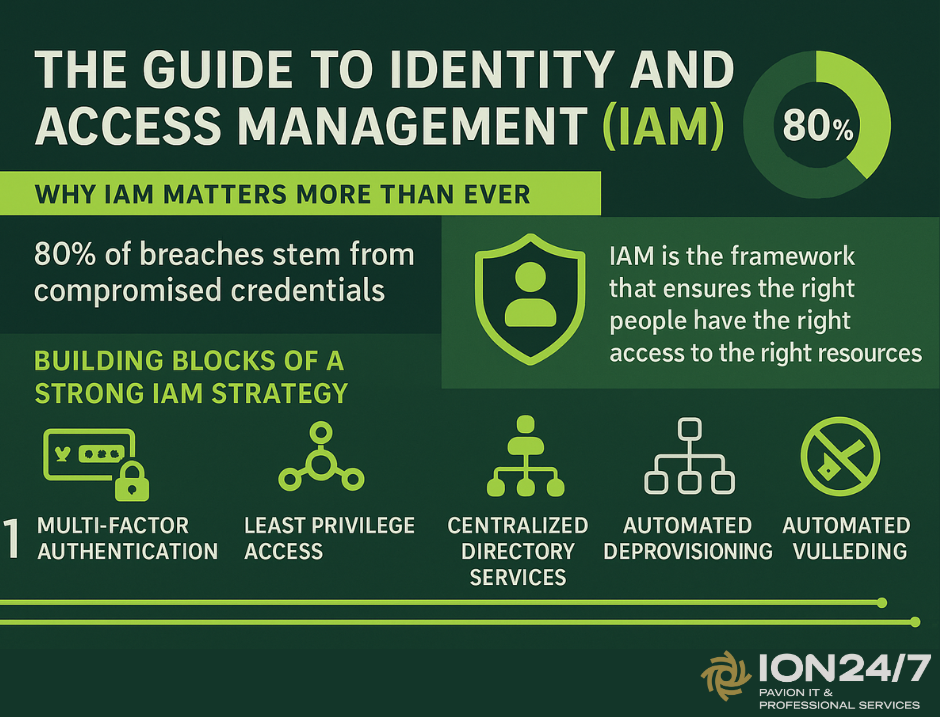Why IAM Matters More Than Ever
For small and midsize businesses, cybersecurity is no longer just an enterprise problem. Attackers increasingly target SMBs because they often have fewer defenses but just as much valuable data.
According to recent studies, 80 percent of breaches stem from compromised credentials. Identity and access management (IAM) is the first line of defense against this growing threat.
What Is Identity and Access Management
IAM is the framework that ensures the right people have the right access to the right resources, no more, no less. It includes authentication, authorization, and user provisioning.
When implemented correctly, IAM strengthens security, simplifies compliance, and reduces friction for employees.
Building Blocks of a Strong IAM Strategy
- Multi-Factor Authentication (MFA): MFA significantly reduces risk by requiring more than one form of verification.
- Least Privilege Access: Employees should only have access to systems they need to perform their jobs.
- Centralized Directory Services: Using tools like Azure AD or Okta simplifies user management and audit readiness.
- Automated Deprovisioning: When employees leave, access should be revoked immediately to close potential vulnerabilities.
Integrating IAM with Zero Trust
The Zero Trust model operates on one principle: never trust, always verify. By integrating IAM with Zero Trust architecture, SMBs can protect against insider threats and external breaches alike.
Regularly review user roles, device health, and session activity. Identity is not static; it must be continuously validated.
Affordable, Scalable Solutions for SMBs
Modern IAM solutions are cloud based, affordable, and scalable for growing businesses. Many offer built in integrations with existing systems and compliance tools.
Investing in IAM is not just about security; it is about enabling safe growth, customer trust, and operational confidence.
FAQs
- Why do SMBs need identity and access management?
IAM helps SMBs protect data, reduce cyber risk, and meet compliance requirements by controlling who can access what information. - What is the difference between IAM and Zero Trust?
IAM manages user access, while Zero Trust continuously verifies every connection. Together, they create a stronger defense. - Is IAM expensive for small businesses?
Not anymore. Cloud-based IAM platforms offer affordable subscriptions and easy integrations with existing tools. - How can SMBs start implementing IAM?
Begin with MFA, adopt least-privilege principles, and choose a scalable IAM platform to centralize access management.

